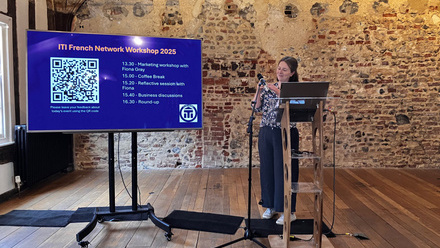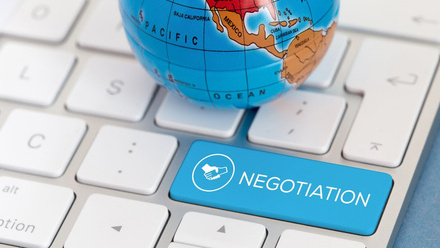5 ways generative AI can increase your productivity as a translator
Mariana Silva identifies ways to use generative AI in your workflow that will help increase your productivity as a translator.
The translation industry is facing a turning point, as Generative AI technologies develop at an incredible pace and promise to reshape the framework of the profession. This innovation has created some division among translators. On one side, many are apprehensive about using these tools, confusing them with Machine Translation, while on the other, a wave of enthusiasm has built up, as professionals are amazed by how they're improving productivity and are very excited about its future potential.
In this article, we explore how Generative AI, particularly ChatGPT, can boost our productivity as translators, highlighting five advantages of incorporating it into our daily work without compromising the need for human expertise.
*Disclaimer: Generative AI and Machine Translation are related concepts but are not the same – Generative AI has often been criticised because some (not so professional) translators use it for translation purposes. Even though this is a feature of that tool, and keeping in mind translation isn't just about swapping words between languages, that's not the type of use we're encouraging. Translating requires specialised knowledge and a deeper understanding of cultural nuances, so misusing AI translation is unethical and unprofessional.
1. Research efforts maximized
If you're a translator, you’ll know the struggle of searching for precise terms on search engines. It's time-consuming, and the results are mainly based on the higher-volume keywords, making it challenging to find suitable alternatives for the term you're translating.
To mitigate these disadvantages, incorporating Generative AI can help you compare terms, analyse their nuances, and uncover subtle differences, providing precise insights. You know that feeling when a word or expression is right on the tip of your tongue, but you just can’t remember it? ChatGPT can help you find the answer.
The tool saves valuable time, enabling you to focus on the actual translation process and ensuring accuracy in your work, or to spend time investing in your own professional development.
2. Content creation booster
Of course, the role of a language professional isn't 100% translating. Translators often offer a wide range of services, including transcreation, SEO keyword research, and copy and content writing. On top of this, we also need to promote our services, so creating content for LinkedIn and our website is familiar to us.
That's where Generative AI comes into its own – call it your own personal assistant. It can suggest topics, generate fresh perspectives, and offer innovative viewpoints for your content. Share your draft with ChatGPT and ask it to provide more ideas or suggestions for improvements, and voilà! The potential for enriched and more engaging content at the touch of a button.
Of course, we must put our creative brains into use as well, but if we can improve the results with tools like these, why not make the most of them?
3. More efficient email communication
How much time do you spend on client communication, especially when you want to explain something in detail? It can be demanding! Writing a few words about the subject in question is enough for ChatGPT to craft clear, concise text ready to be edited and sent (of course, make sure you never include any confidential or personal information).
You can even prompt a specific tone of voice and specify any words you don't want to use - quite remarkable! This enables you to create clear correspondence more quickly and easily, increasing the time you have available to dedicate to the core of your translation tasks, ultimately enhancing your productivity.
4. Technical challenges essential
IT knowledge is essential for translators – from handling different document formats to dealing with CAT tools or other software – so an interactive "Support Page" comes in very handy. You can use Generative AI when you face a challenging situation and ask the platform for help. It usually provides more than one solution to help resolve issues efficiently, saving you lots of time and effort. ChatGPT can be an invaluable companion in these situations, offering multiple solutions. This means fewer headaches and give you more time to focus on delivering high-quality translations.
5. Versatile task support
Rearranging something in alphabetical or numerical order doesn't have to be another tedious task you need to perform manually, as ChatGPT can do it for you. If you’re struggling with character limits, use the tool’s suggestions to shorten your phrase or to rephrase it. Do you want to check the overall legibility of the content you've just created? You can prompt the tool to summarise it for you. Now you have more time to focus on more relevant and expert-related tasks!
In conclusion, generative AI technologies like ChatGPT won't replace translators. It won't be the new go-to AI translator. But it can be an incredible asset. It serves as an assistant to leverage human expertise, particularly for translators. It improves our productivity while our skills and value remain intact, elevating our value to clients and projects.
Even though AI won't replace translators, adapting to innovation is a strategic imperative in a world where technology reshapes industries daily. Having an open mind about this topic enables us to meet the demands of a fast-paced world where those who don't upskill run the risk of becoming outdated.
In short, translators who embrace technology equip themselves with the necessary skills and adaptable mindset required to navigate potential disruptions in an ever-evolving landscape. Are you making the most of generative AI innovation?
ITI members can further build their understanding of the use and development of generative AI in translation and interpreting in My ITI.






